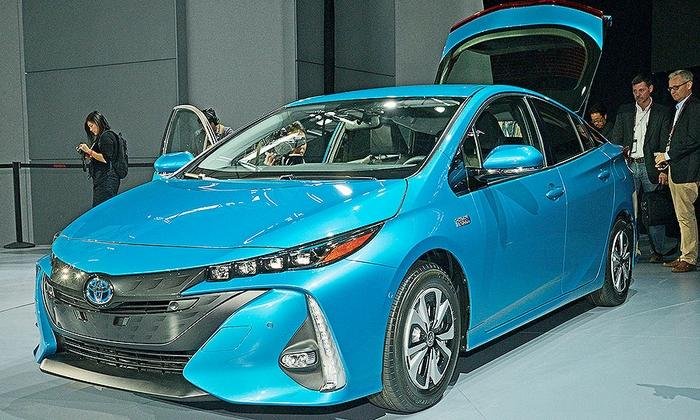Toyota: Look Past Prime's EV Range

In addition to a 965-km range and unique styling that sets it apart from the garden-variety Prius, the plug-in Prime doubles the EV range of its predecessor.
To 35 km.
Compare that to the 53-mile range on Chevy's second-generation Volt (even the first generation got 35). Hyundai's new Ioniq plug-in, which made its North American debut in New York, promises around 25 miles on electric only; its Sonata PHEV offers 24 miles. And in 2018, Honda is expected to introduce a dedicated plug-in car with an EV range of around 40 miles.
Odd, isn't it, that Toyota, which has been so superlative in its development and sales of hybrid vehicles, turns out to be a slacker on such a key metric as EV range?
Not really, given the overall importance Toyota and the marketplace have given to plug-in electric vehicles.
"Toyota has repeatedly over the years shown a real indifference toward batteries," says Ed Kim, vice president of industry analysis at AutoPacific. "They seem to like them in context of a regular hybrid, but the whole idea of plugging in a battery, they've been notably unexcited about that sort of thing."
So have consumers. Just 42,293 units of the previous-generation Prius plug-in were sold in the four years it was on sale in the U.S. That's a small fraction of the nearly 1 million total Prius models sold in the U.S. since Toyota began expanding the Prius lineup with variants in 2011. (Chevy sold 15,393 Volts last year.)
The plug-in model "helps us get to CAFE numbers," Jim Lentz, CEO of Toyota Motor North America, told Automotive News, referring to the tightening federal fuel economy targets. "But the reality is the market still has to like it."
And for that, Toyota is looking beyond EV-range bragging rights.
To heighten the Prime's appeal, Toyota gave the car a look that's dramatically different from the regular Prius and fitted it with an 11.6-inch touch screen in the center console, a first for the brand.
Despite its lackluster EV-only numbers, the Prime will have more than 965 km of total range thanks to its thrifty gasoline engine, for a 120 mpg-e rating (vs. the Volt's 106 mpg-e figure). Fuel economy without the battery is on par with the normal Prius.
Those changes have Toyota bullish on the Prime's prospects; the automaker is hoping to double the sales volume of the earlier Prius plug-in, said Bill Fay, general manager of Toyota Division.
"We're not going to say we have the best EV range, but I think we're going to be able to say that the whole package is really going to deliver what the consumer wants," Fay told Automotive News. "Our research and questioning isn't necessarily that they're buying it for the highest EV range."
The automaker isn't sweating the inevitable comparisons with the Volt either.
"You've got a midsize vs. a compact car; you've got a 965-km-plus range, which is stronger than the Volt's; you've got 106 mpg-e rating vs. 120," Lentz said.
"So there are a lot of reasons that the Prius is probably the better package."
Related News


